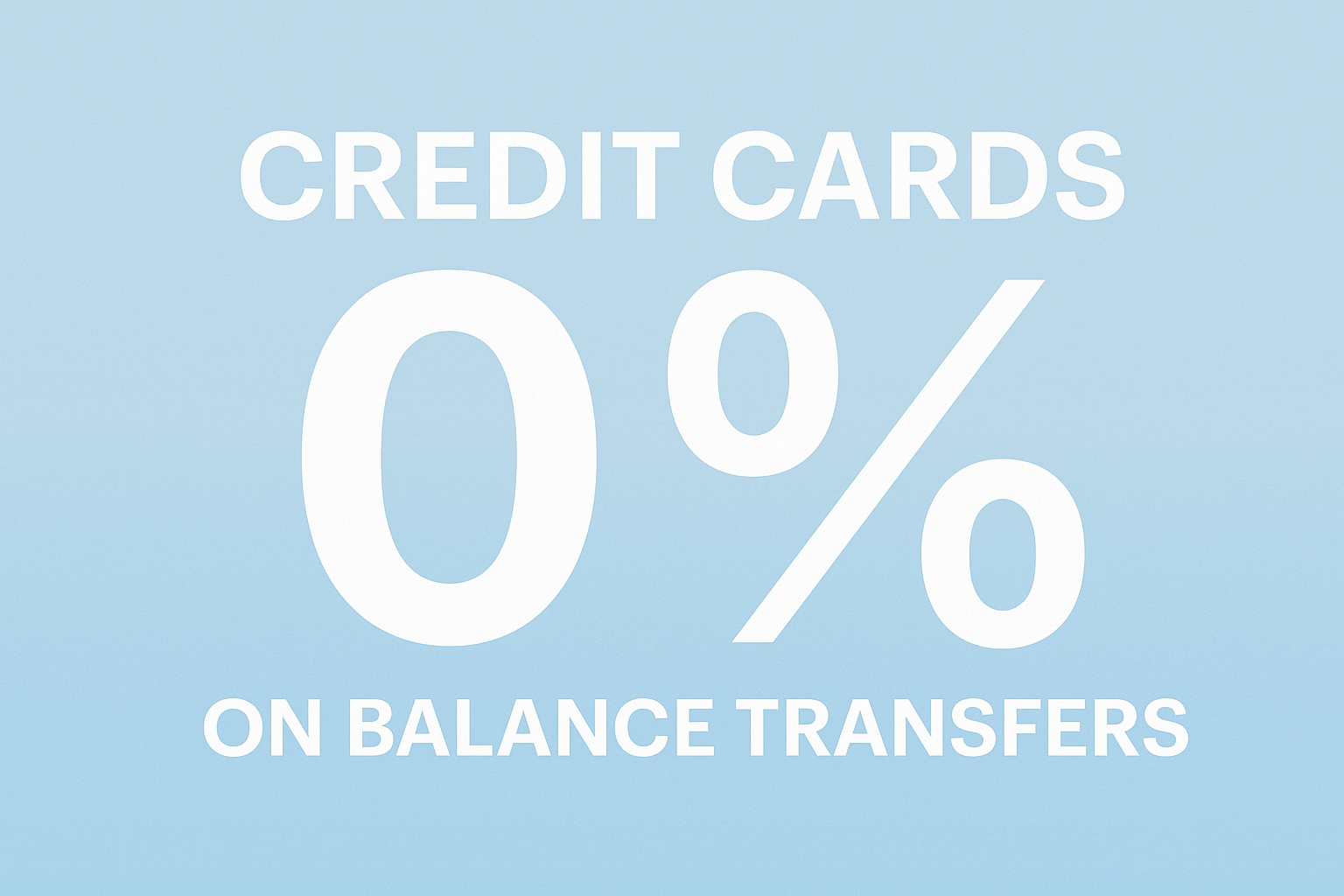Your cart is currently empty!
Credit Cards 0 on Balance Transfers

Credit cards 0 on balance transfers have become a popular financial strategy among consumers in 2025. This option offers a compelling way to manage debt without accumulating additional interest. In today’s uncertain economic environment, where interest rates are high and financial institutions are tightening credit conditions, more individuals across the US, UK, Italy, and Europe are seeking alternatives to reduce their debt burden. The idea behind credit cards 0 on balance transfers is simple: transfer existing credit card debt to a new card that offers zero percent interest for a specified promotional period. This move can result in significant savings and quicker debt elimination when managed wisely.
Why Credit Cards 0 on Balance Transfers Work So Well
When a consumer is burdened by high-interest credit card balances, most of their monthly payments go toward interest rather than the principal. However, credit cards 0 on balance transfers eliminate that interest cost temporarily, allowing the full payment to go toward reducing the debt. For example, if someone owes $5,000 on a card with a 25% annual interest rate, they would be paying over $100 monthly in interest alone. A balance transfer offer with 0% APR for 18 months can save over $1,800 in interest during that time, giving the borrower a genuine opportunity to become debt-free faster.
Timing Is Everything: Strategic Use of Zero Balance Transfer Offers
Credit cards 0 on balance transfers are most effective when used strategically. The ideal moment to use one is when you’re actively trying to consolidate debt or improve your credit score by lowering your utilization ratio. Timing matters because introductory offers don’t last forever. Typically, promotional periods range from 12 to 21 months, after which the standard interest rate kicks in. Consumers who plan their payments carefully within this window can pay off large portions—or even the entirety—of their transferred balance without paying a single dollar in interest. This financial discipline makes a real difference in wealth building and credit health.
How Credit Cards 0 on Balance Transfers Support Financial Goals
Across the US and European markets, more individuals are seeing credit cards 0 on balance transfers as a powerful tool to meet short-term financial goals. Whether it’s paying off medical bills, consolidating holiday spending, or streamlining finances after a big purchase, these credit cards can simplify repayment. Many financial advisors now recommend balance transfer cards as a gateway to smarter budgeting. Since the user commits to repaying a fixed amount monthly without fluctuating interest, there is greater transparency and predictability in personal finances—attributes that many modern households value in an era of economic unpredictability.
Evaluating the Best Credit Cards 0 on Balance Transfers in 2025
Consumers must evaluate several factors when choosing among credit cards 0 on balance transfers. These include the length of the 0% introductory period, any balance transfer fee, the regular APR after the promo ends, and whether there are additional perks like cashback or travel rewards. Some cards charge 3% to 5% of the transferred amount as a balance transfer fee, which must be weighed against the potential interest savings. Additionally, cards that combine a generous balance transfer period with rewards can be particularly valuable. Those looking for comprehensive guidance can explore insights from the best credit cards of 2025 to make informed choices.
Common Mistakes to Avoid With Balance Transfers
Using credit cards 0 on balance transfers comes with potential pitfalls if mismanaged. One common mistake is continuing to use the old credit cards after transferring balances, which leads to more debt accumulation. Another risk is missing a payment, which could trigger the end of the 0% promotional rate. Consumers must also avoid transferring balances to cards with short 0% APR periods unless they are confident about repaying quickly. Discipline is key. Understanding the terms and proactively managing payments ensures the transfer strategy remains beneficial rather than backfiring.
How Credit Cards 0 on Balance Transfers Influence Credit Scores
A well-executed balance transfer can actually improve your credit score. That’s because moving high balances from one card to another often results in lower credit utilization—a major component of the FICO score. However, applying for a new card creates a hard inquiry and slightly shortens the average age of accounts, which may cause a temporary dip. Over time, though, responsible use of the new card and reduction in total debt often lead to score improvements. Therefore, credit cards 0 on balance transfers can become a long-term credit health tool when used correctly.
How Broadcom’s Rise Reflects Smarter Consumer Technology
Interestingly, the evolution of financial tools like credit cards parallels trends seen in the tech sector. For instance, companies such as Broadcom Inc. are transforming the way devices process data and enable fintech applications. The backend infrastructure supporting mobile banking, AI-based credit scoring, and fraud detection is powered by innovations from chipmakers and cloud companies. Just as Broadcom’s stock represents a leap in intelligent infrastructure, balance transfer cards are empowering smarter consumer choices. Both exemplify innovation built around enhancing user experience and decision-making.
Crypto Investors Also Embrace Balance Transfer Cards
Even crypto investors who manage portfolios in volatile assets like Ripple are turning to traditional financial instruments like credit cards 0 on balance transfers. With market fluctuations in digital assets, especially Ripple (XRP), users often find themselves needing liquidity. In such cases, a balance transfer credit card can provide a financial cushion to reorganize short-term finances without selling digital holdings at a loss. This convergence of traditional and digital finance speaks to the increasing adaptability of modern financial strategies.
Comparing Rewards: Balance Transfers vs. Store Credit
Another common question is how credit cards 0 on balance transfers compare to store-specific cards like the Best Buy credit card. While the latter offers perks on in-store purchases, it rarely provides long 0% balance transfer periods. Balance transfer cards are more suitable for debt management, whereas store cards are designed to promote spending. Depending on your goals—debt reduction vs. earning rewards—your choice of card will differ. However, many consumers maintain both types for different purposes, emphasizing the need for clear financial priorities.
The Psychology of Debt Reduction Using Balance Transfer Cards
The psychological relief from transferring a balance to a 0% interest card is profound. Users often report decreased anxiety and improved motivation when they see debt shrinking faster. By eliminating interest, each monthly payment has visible results, which creates a feedback loop of positive behavior. This mental aspect of debt reduction is a hidden benefit of credit cards 0 on balance transfers. It empowers users to stay on track, avoid missed payments, and develop lasting financial discipline—core values that contribute to long-term stability.
Zero Interest, Not Zero Responsibility
A key message that financial educators emphasize is that while credit cards 0 on balance transfers provide relief, they do not eliminate responsibility. Users still need to follow a budget, monitor their spending, and plan their repayments within the promotional period. The misconception that zero interest equals free money can be dangerous if it encourages careless behavior. In reality, this tool works best when paired with strong financial intent and accountability. Those who approach it thoughtfully often find themselves in a vastly improved financial position within a year.
Credit Cards 0 on Balance Transfers and Economic Recovery
As the global economy continues to recover from previous shocks, individuals are seeking ways to stabilize personal finances. Credit cards 0 on balance transfers are playing a pivotal role in helping families bridge financial gaps without increasing debt. They allow for breathing room—something many lacked during high-inflation periods. These cards are now a cornerstone of personal financial planning, especially among young professionals and middle-class families trying to regain momentum post-crisis. They provide a timely buffer while aligning with broader economic recovery efforts.
Tailoring Your Card Choice to Regional Markets
Depending on whether you reside in the UK, US, Italy, or another part of Europe, the availability and features of credit cards 0 on balance may vary. For instance, UK consumers may find cards offering long interest-free periods but with higher balance transfer fees. In contrast, US issuers may offer no transfer fee options but shorter durations. Italian and other European markets are also expanding their offerings. Local financial literacy plays a role, and it’s essential to understand regulatory and economic nuances before choosing the right product.
The Future of Balance Transfer Cards
Looking ahead, credit cards 0 on balance are expected to become more customized and AI-driven. Banks are already using machine learning to offer targeted promotional rates based on user spending habits and credit behavior. As the fintech landscape evolves, balance transfer products will likely become more transparent, with better app-based management tools and real-time alerts. Integration with budgeting platforms and AI advisors will make them even more consumer-friendly. This future aligns with the broader digital transformation of personal finance tools.
Final Thoughts on Credit Cards 0 on Balance Transfers
Credit cards 0 on balance transfers are more than just a temporary relief from interest—they are a pathway to financial empowerment. When used responsibly, they enable users to eliminate debt faster, improve credit scores, and regain control over finances. In a complex financial world filled with rising costs and volatile investments, such tools provide clarity and structure. Whether you are managing existing debt or preparing for the future, a well-chosen balance transfer card can be a game-changer.

Mr. Rajeev Prakash
Rajeev is a well-known astrologer based in central India who has a deep understanding of both personal and mundane astrology. His team has been closely monitoring the movements of various global financial markets, including equities, precious metals, currency pairs, yields, and treasury bonds.
